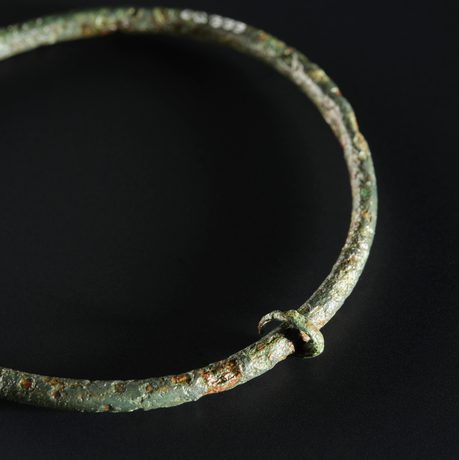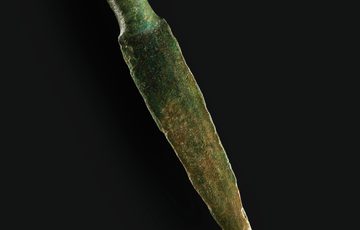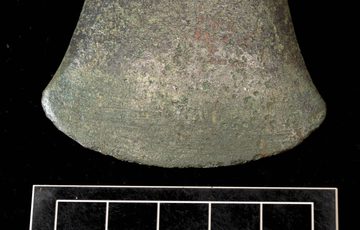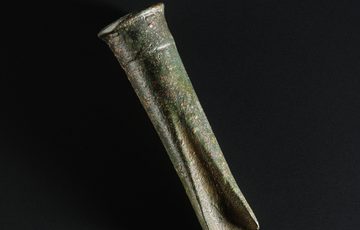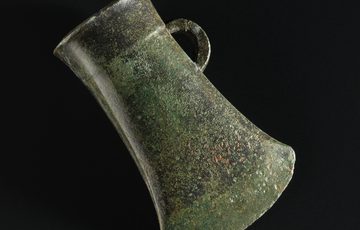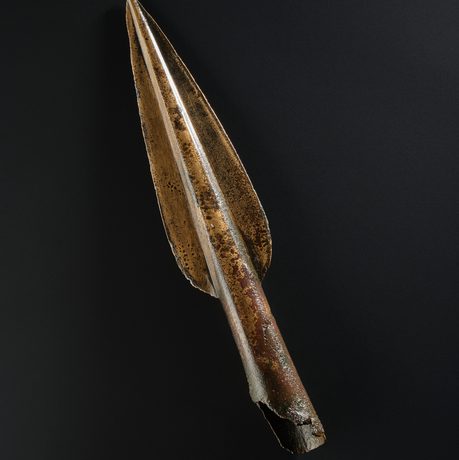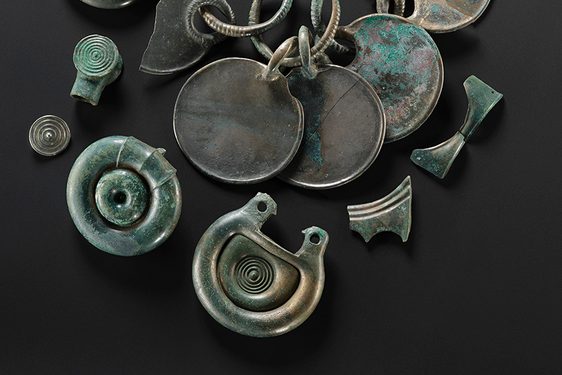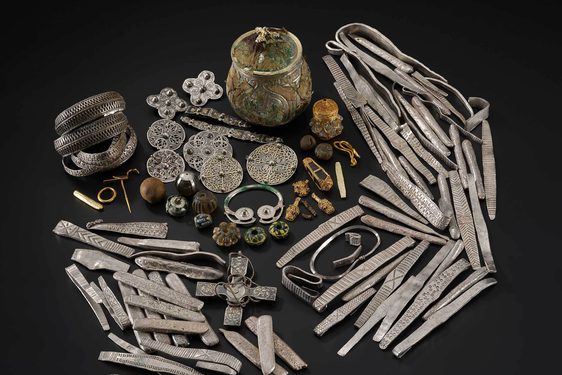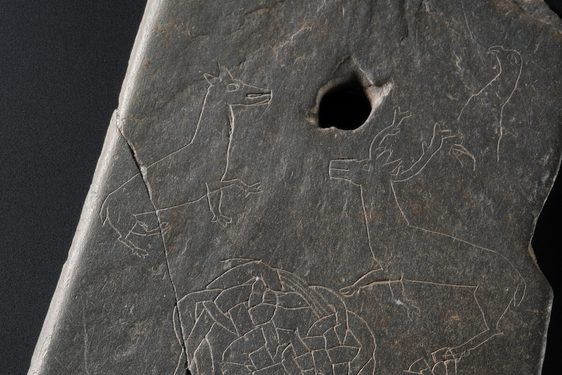
The Torran Hoard: A Bronze Age discovery
News Story
Dr Matthew Knight, Senior Curator in Early Prehistory, uncovers how a missing ferret led to a big discovery.
It was spring time in 1881 and Mr Thomas Orr Richmond had lost his ferret. In searching for it, he uncovered two bronze weapons and a bronze tool from a Late Bronze Age hoard. It would be another 81 years before the rest of the hoard was found.
Ferreting around
Mr Richmond, tenant of Torranbeg farm, was using his ferret to bolt rabbits from burrows. His ferret went missing on the rocky slopes of a crag just south of the small town of Torran, near Ford, in Argyll. Mr Richmond, and others, were searching for the ferret amongst a rock fall, six feet (c.2 metres) down a rabbit hole, when they came across two large bronze spearheads and a bronze woodworking gouge.
These objects were three thousand years old, dating to the Late Bronze Age in Scotland (c.1150–800 BC). One of the spearheads and the gouge were donated to the (then) National Museum of Antiquities of Scotland. The second spearhead was retained by a local landowner and is unfortunately now lost.
We do not know if Mr Richmond ever found his ferret.
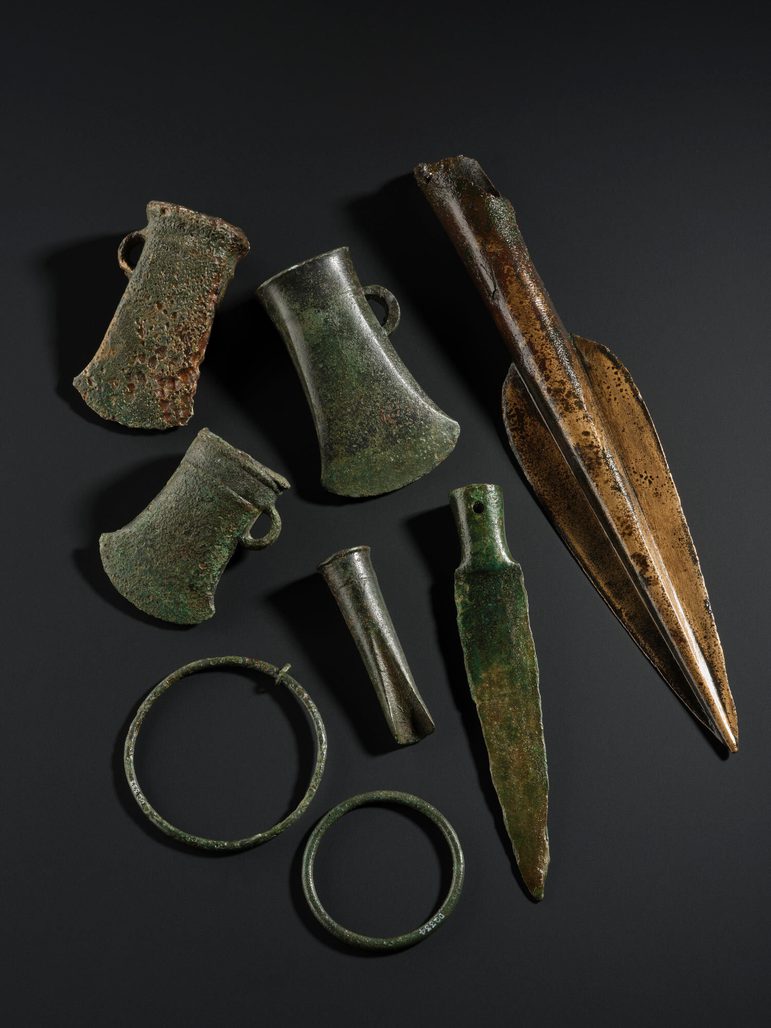
Some 81 years later in 1962, the eminent Scottish archaeologist Marion Campbell was conducting a field survey of Mid Argyll. She made enquires about the original location of this hoard. The site was noted as ‘Craig Beoch’ at the southern end of Loch Awe, but this place name did not appear on the Ordnance Survey map. She was eventually guided to a very steep slope under a rocky scarp called Creag Beathach, which loosely translates to ‘crag of bears’, or ‘crag of wild beasts’.
The probable findspot was identified as a large rock, perched precariously on two others. It was while searching in this area that a bronze ring was picked up. Further examination of the area revealed other Late Bronze Age bronze objects. This included another ring, three socketed axeheads, a bronze fragment (no longer surviving), and a socketed knife. There might have been more objects here, but unfortunately these are likely to have fallen down the slope amongst rocks and fallen trees. The newly discovered objects were donated to the national collections.
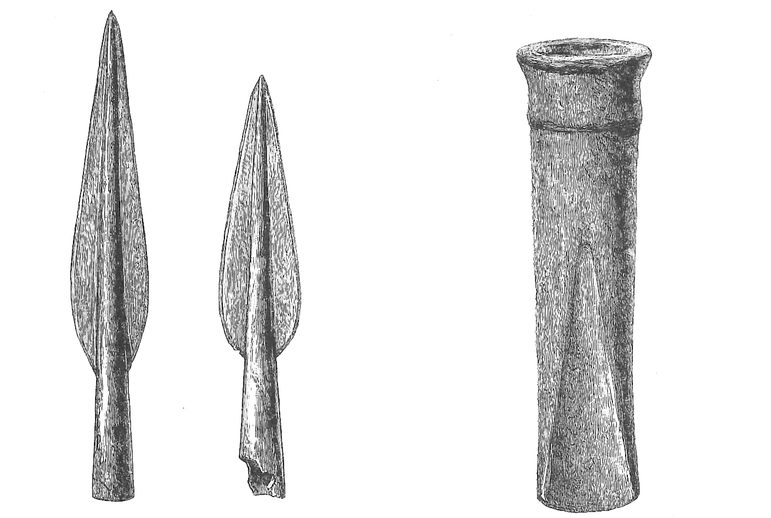
Two spearheads and a socketed gouge as illustrated in 1884 (Strachan 1884, figures 1, 2 and 3).
The crag of bears/wild beasts
Marion Campbell’s work identifying this location was important. It revealed some of the aspects involved in depositing this group of objects. The modern name ‘Creag Beathach’ has connotations of bears or beasts. It evokes the idea that this was a place to which stories were attached, a place that can and did hold significance. At least a hundred feet up a steep slope, it seems that the hoard was placed within a rock shelter and covered. It was not necessarily buried as many Bronze Age hoards were. This location holds a commanding view over a small body of water called An Lodan connected to the southern end of Loch Awe.
It is a place that would have been difficult to get to. It was potentially dangerous with occasional rock falls, yet it was highly visible and possible to revisit if needed. Objects were perhaps added or taken away over time. We can only speculate what name this place may have had during the Bronze Age.
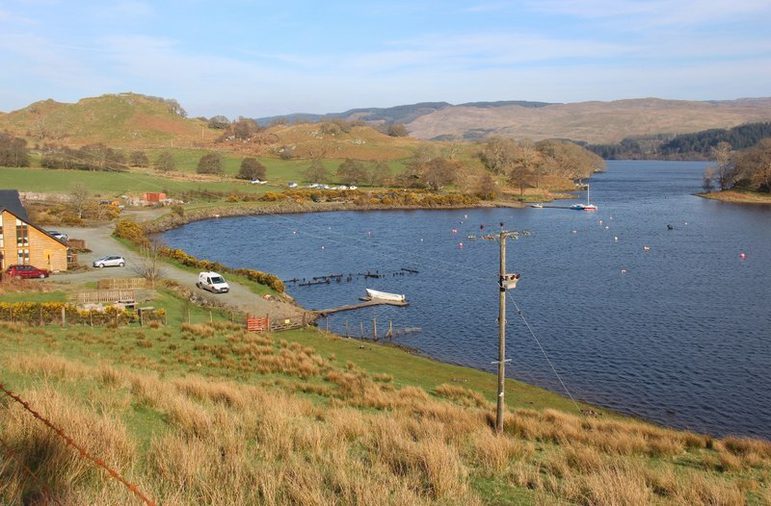
A north-easterly view over An Lodan and up Loch Awe.
The surviving objects
The nine surviving objects that make up the Torran hoard embody different aspects of Bronze Age life.
Spearheads
The two large spearheads would have sat on wooden shafts. They may have been hunting implements or weapons, or perhaps symbols of status given their large size (26cm and 30cm long). The spearhead that survives in the collections has a blunted tip but otherwise appears to have been functional.
Axeheads and gouge
The axeheads and gouge likewise would have been mounted on wooden shafts. These would have served as useful craft tools for cutting and shaping wood.
Two axeheads have slightly asymmetrical cutting edges, suggesting they were resharpened and reworked. One of these has hammering and sharpening marks suggesting it was well worked tool.
Knife and rings
The knife, once fitted with a wooden handle, is neatly made and shaped, again a useful piece of kit for a range of tasks. The two rings are more enigmatic, one of which has a smaller interlinked copper-alloy strip; the use of these is unclear. In all, it is tempting to see this group as a personal set of equipment or tool kit or maybe a communal gathering of objects.
Image gallery
Stylistic connections
The style of axeheads hints at connections beyond the local area, adding to the intrigue. One is a form typical of Yorkshire, with such axeheads rarely found in northern and western Scotland.
Another is an Irish-style again unusual on the west coast, though with a scattered distribution across central Scotland. Were these objects imported through trade and exchange networks? Or brought from different areas by travellers and added to this burial of objects?
Offering up the Torran hoard
Hoards of the Late Bronze Age are well-known across Scotland and come in many forms. Debates often concern whether such hoards were abandoned scrap metal, or if they may have been offerings to the land or prehistoric deities. Collections of complete weapons and tools, as at Torran, have historically been considered the stock of Bronze Age traders. The Torran objects are well-made and prepared for use and could have been ‘stored’ for later use.
We should look beyond the functions of these objects and consider what the objects represented. What was the importance of giving up complete functional tools during a time when such things represented livelihoods, status and identity? A hunter, woodworker or community giving up their weapons and tools was a significant act.
Perhaps it was the stories embodied in these objects that made them significant and appropriate for deposition. Such an important act demanded a special place. This came in the form of a highly visible, yet inaccessible rock shelter that drew on intimate knowledge of the landscape. From this perspective, the Torran hoard becomes better viewed as an offering, one that expressed the wealth and beliefs of those who lived here three thousand years ago.
Further resources
Read
- Campbell, M. and Coles, J.M. (1963) “The Torran hoard”, Proceedings of the Society of Antiquaries of Scotland vol.96 (1962–63): 352–354 | Available online
- Strachan, J.M. (1884) “Notice of a find of bronze weapons at Ford, Loch Awe”, Proceedings of the Society of Antiquaries of Scotland vol. 18 (1883–84): 207–209 | Available online
Watch
For more on Late Bronze Age hoards in Argyll and Bute, you can find Senior Curator of Prehistory, Dr Matthew Knight, speak on the topic via Kilmartin Museum's Youtube channel.
